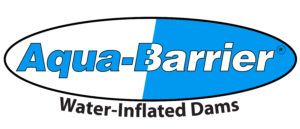Frequently Asked Questions
Find answers to questions about the Aqua-Barrier system, installation methods, and more.
If you can’t find what you are looking for here – please reach out and an Aqua-Barrier Product Specialist will be there to get you the answers you need.
What is our product made of?
The barriers are made using an engineered vinyl-coated polyester membrane with a scrim reinforcement for strength.
What is the maximum water depth our product will control?
Due to varying conditions, there is no simple answer to this question. However, by rule of thumb, our largest barrier will control up to 6 ft of water and sediment combined. Each size needs to have a minimum of 25% freeboard.
How do the barriers ship?
Aqua-Barriers® are shipped on 4×4 or 4×5 pallets via a commercial truck line.
Can I use the water on site or do I have to use clean water to fill the barrier?
Any available water source can be used for inflating the barriers. Complete instructions can be found in the User’s Manual, shipped with every order and available online for download.
How do you install the product?
The Aqua-Barriers are simply unrolled, unfolded, and inflated with water. Our small Aqua-Barriers can be installed manually using 1-2 people while larger barriers are best installed using a track hoe or a crane with a 5 man crew. For additional information please refer to the Instruction Manual or reach out to us via email or phone.
What sizes are the Aqua-Barriers available in?
We offer custom purchases anywhere between 1ft – 8ft tall and in any length between 25ft – 105ft. Our rental barriers are available in 2ft, 3ft, 4ft, 6ft, and 8ft tall and the lengths are available in increments of 25ft up to 100ft. See Literature page and click on appropriate brochure to view each size chart .
Can our product be used in freezing temperatures?
In some cases yes! Please call our knowledgeable sales representatives for advice on using the product in severe cold climates.
How long does it take to set up a barrier?
Installation time varies according to system size and pump source but in most cases, it will take 2 hours or less to install 100 linear feet of Aqua-Barrier.
Why is 25% freeboard needed?
Once a minimum of at least 25% freeboard is acquired, the Aqua-Barrier will begin to stabilize. Freeboard requirements may increase if the barrier is exposed to high water velocities (3 feet or more per second), slick soil conditions, or other unplanned hydrostatic conditions.


